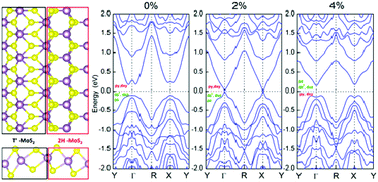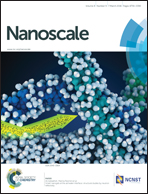Predicting a new phase (T′′) of two-dimensional transition metal di-chalcogenides and strain-controlled topological phase transition†
Abstract
Single layered transition metal dichalcogenides have attracted tremendous research interest due to their structural phase diversities. By using a global optimization approach, we have discovered a new phase of transition metal dichalcogenides (labelled as T′′), which is confirmed to be energetically, dynamically and kinetically stable by our first-principles calculations. The new T′′ MoS2 phase exhibits an intrinsic quantum spin Hall (QSH) effect with a nontrivial gap as large as 0.42 eV, suggesting that a two-dimensional (2D) topological insulator can be achieved at room temperature. Most interestingly, there is a topological phase transition simply driven by a small tensile strain of up to 2%. Furthermore, all the known MX2 (M = Mo or W; X = S, Se or Te) monolayers in the new T′′ phase unambiguously display similar band topologies and strain controlled topological phase transitions. Our findings greatly enrich the 2D families of transition metal dichalcogenides and offer a feasible way to control the electronic states of 2D topological insulators for the fabrication of high-speed spintronics devices.


 Please wait while we load your content...
Please wait while we load your content...